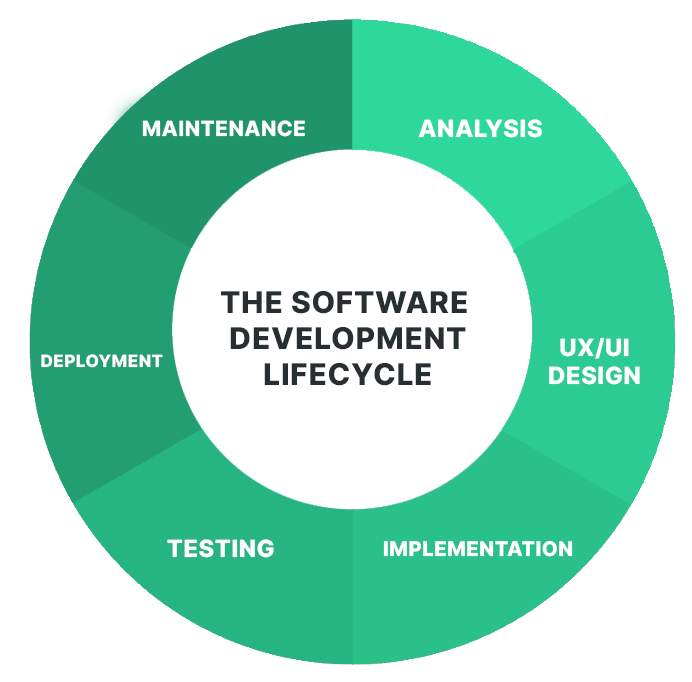What is Software Development Life Cycle?
Software Development Life Cycle is a procedure used by software teams to develop, design, and test software. There are different types of Software Life Cycles which represent all the phases of software development. The development team chooses a life cycle method that suits them in such a way that an efficient and reliable software product is developed. It is good to follow a Software life cycle to develop a software product in a systematic and nice way.

Planning and Analysis:
In order to Plan, we have to gather the requirements from the sales team, customers, and domain experts in the industry. Then perform requirements analysis to plan the basic project approach and understand the product feasibility in technical and economical areas.
Then prepare the documentation based on the analysis and approval from the client or market analysts. This is done through the SRS document (Software Requirement Specification), which involves whole requirements that need to be designed and developed.
Design:
Based on the requirements in the SRS, more than one prototype for the product is suggested and documented in the DDS (Design Document Specification). This is reviewed based on different criteria like time constraint, robustness, budget, design modularity, and the best approach selected. The design approach includes architectural and third-party modules along with data flow representation.
Implementation:
In this stage, the product is in the development environment stage, also known as the coding stage. Former stages are the key to this stage.
Testing and Integration:
It is essential to test the software before delivering the product to the customer. It must undergo a series of testing to find the bugs and fix the bugs. It will make a poor impression on the client if coding problems occur after deployment. Software testers will determine if the requirements are met. Based on the feedback from testers software will be sent multiple times for production. Different Testings are unit testing, integration testing, quality testing, etc.
Deployment:
After testing, the code is pushed to production. It is then made ready for deployment and then released. Now the product goes live to the users.
Maintenance:
Now the developers monitor the server load and develop new features and updates based on the user's feedback
Some of the Software Development Life Cycle models are:
1. Waterfall Model
2. Iterative Waterfall Model
3. Agile Model
4. RAD model
5. V model
6. Prototype Model
7. Spiral Model
Agile Software Development Life Cycle model
In the Agile SDLC, the entire project is subdivided into multiple stages rather than a single stage. Agile SDLC is developed with speed in mind. Agile strictly follows its sequence, the design does not start until research is completed, and development does not start until designs are approved.
In Agile SDLC, it is crucial to involve clients and other stakeholders to check along with developers and managers. Agile is an iterative approach for teams to manage the work throughout the entire development process.
Agile project management is a repetitive process for the teams to manage their work throughout their development process. Traditional Project management methods such as waterfall assume that they have all the information and requirements. But Agile does not follow this methodology. The Agile method promotes working on small tasks, executing them quickly, getting feedback, and repeating it. Satisfaction of the customer is the highest priority in Agile SDLC. Also, deliver the product frequently, and conduct daily standup meetings between the client and development team where they can discuss the workflow and check if both are on the same track. Another benefit of Agile SDLCis quickly detecting and resolving bugs and issues.
Benefits of Agile SDLC
1) Quality Product
Since the client is involved in the entire development, the final quality of the product is superior.
2) Customer satisfaction
Since the client is involved in every part of the development, the output expected by the client and the product delivered will be the same which will be impacting customer satisfaction.
3) Reduced Risks
Since we divide the entire project into different segments, a small part of the product can be used in the future if a particular approach does not go as planned.
4) Increased Flexibility
In other methods, changes are done at the final stage, and it consumes time and makes it complex to reflect the change in the entire project. But in Agile, we make segments and conduct daily meetings, which create an easy way for the changes and increase flexibility.
5) Continuous Improvement
Since Agile SDLC follows iteration or repetition, each iteration will be better than the previous one. Thus there will be no repetition of mistakes. The Agile method has an open culture of exchanging ideas and collaborations, which makes the team learn from the shared experience and improve.
When we compare the traditional SDLC method with Agile, it provides a quality product, customer satisfaction, reduced risks, increased flexibility, progress transparency, focus on users, etc. Thus Agile SDLC is a method commonly used and better than the traditional waterfall method.